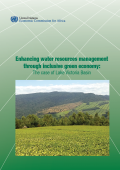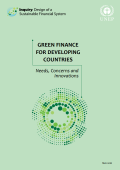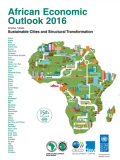
This white paper provides an analysis of the Intended Nationally Determined Contributions (INDCs) for 37 partner countries in the U.S. Government's Enhancing Capacity for Low Emission Development Strategies (EC-LEDS) program and other designated priority countries. The white paper includes an overview of global INDCs, country profiles for countries, regional trends, and sectoral trends. Moreover, each country profile includes information from the INDC on the:

Lake Victoria in East Africa, the world’s second largest lake, is endowed with abundant water and other natural resources. The lake is transboundary and of significance to its basin countries – which are also East African Community (EAC) partner States (Burundi, Kenya, Rwanda, Uganda and United Republic of Tanzania) – and basin communities because of its role in supporting valuable ecosystem services, livelihood systems and economic activities. The basin’s natural resource endowments include water resources (the lake’s estimated volume is 2,700 km3); rivers, streams and wetlands; abundant and fertile land; natural forest resources; minerals; and wildlife, including a high annual fish yield estimated at more than $550 million. It also hosts the crested crane and the globally threatened sitatunga – a swamp dwelling antelope.


Green finance is a strategy for financial sector and broader sustainable development that is relevant around the world. But the context differs considerably for different countries. Developing countries, notably those with underdeveloped financial systems, face particular challenges in financing national development priorities.
Broadly, concern and action to align financing to sustainable development is concentrated in three areas:

The African Economic Outlook (AEO) 2016 presents the current state of economic and social development in Africa and projects the outlook for the coming two years. The AEO is a product of collaborative work by three international partners: the African Development Bank, the OECD Development Centre and the United Nations Development Programme.
The AEO 2016 shows that the continent is performing well in regard to economic, social and governance issues and has encouraging prospects for the near future. With its special theme on sustainable cities and structural transformation, this edition looks closely at Africa’s distinctive pathways towards urbanisation and at how this is increasingly shifting economic resources towards more productive activities.
